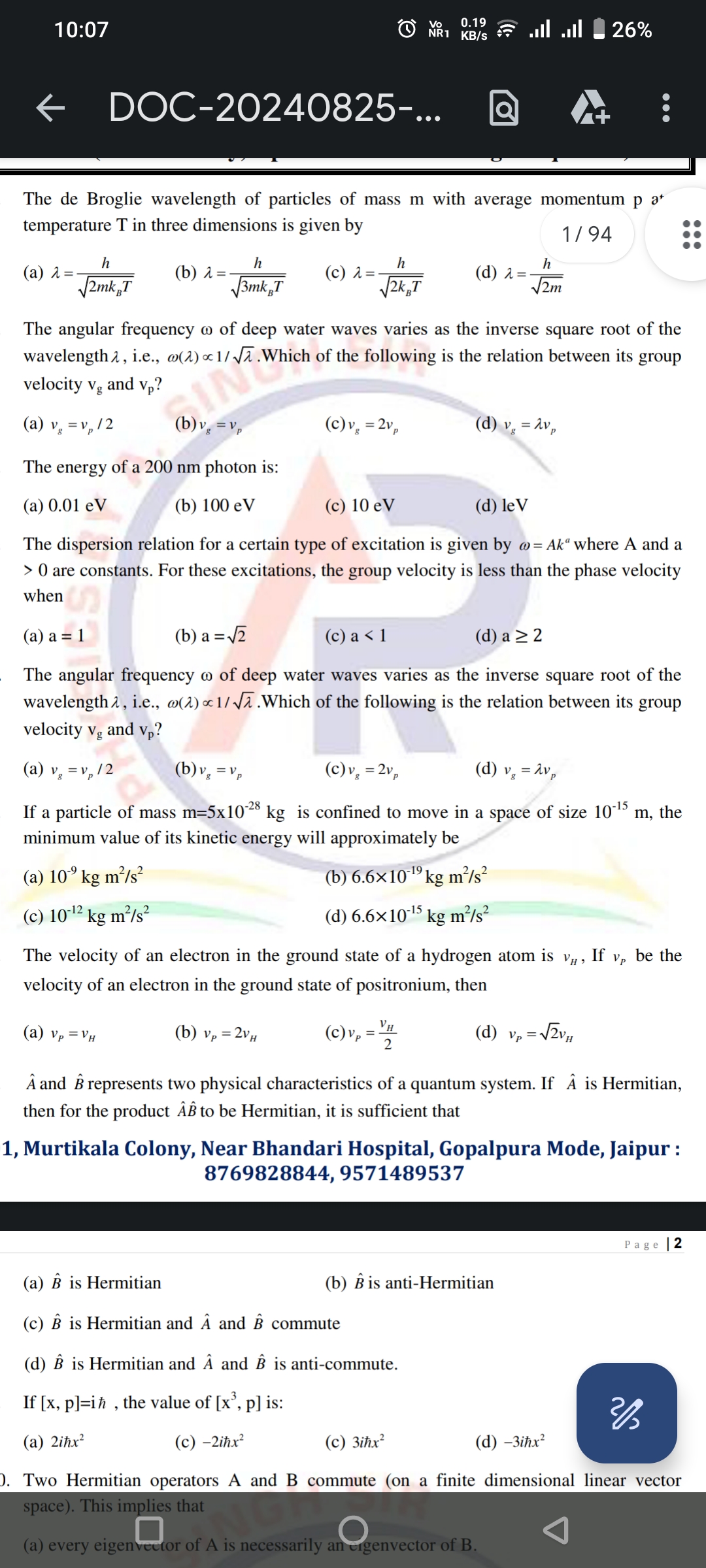The de Broglie wavelength of particles of mass m with average momentum p at temperature T in three dimensions is given by which equation? The angular frequency of deep water waves... The de Broglie wavelength of particles of mass m with average momentum p at temperature T in three dimensions is given by which equation? The angular frequency of deep water waves varies as the inverse square root of the wavelength. What is the relation between its group velocity and phase velocity? What is the energy of a 200 nm photon? What is the dispersion relation for certain excitations? If a particle of mass 5 × 10^-28 kg is confined to a space of size 10^-15 m, what is the minimum kinetic energy? What is the velocity of an electron in a hydrogen atom compared to one in positronium? What conditions make the product of two operators Hermitian? What is the value of the commutation for position and momentum?

Understand the Problem
The question set includes various problems related to quantum mechanics, thermodynamics, and wave properties. Each question tests knowledge about de Broglie wavelength, photon energy, group and phase velocity relations, kinetic energy calculations, and quantum operators.
Answer
λ = h / √3m_k_B_T; v_g = v_p / 2; E = 6.2 eV; group velocity < phase velocity when a < 1; two operators are Hermitian if they commute; [x^3, p] = 3iħx^2.
The de Broglie wavelength in three dimensions is given by: λ = h / √3m_k_B_T; the group velocity v_g is v_p / 2; the energy of a 200 nm photon is approximately 6.2 eV; the group velocity is less than the phase velocity when a < 1; the product of two Hermitian operators is Hermitian if they commute; and the value of the commutation for position and momentum is 3iħx^2.
Answer for screen readers
The de Broglie wavelength in three dimensions is given by: λ = h / √3m_k_B_T; the group velocity v_g is v_p / 2; the energy of a 200 nm photon is approximately 6.2 eV; the group velocity is less than the phase velocity when a < 1; the product of two Hermitian operators is Hermitian if they commute; and the value of the commutation for position and momentum is 3iħx^2.
More Information
The Planck constant h is approximately 6.626 x 10^-34 Js, and the speed of light c is about 3.00 x 10^8 m/s.
Tips
Ensure proper use of units and constants when calculating energy and wavelengths. Misapplication of units can lead to incorrect answers.
Sources
- De Broglie Wavelength - Definition, Formula, Derivation, Electrons - Byjus - byjus.com
- De Broglie wave speed - Physics Stack Exchange - physics.stackexchange.com
- Matter wave - Wikipedia - en.wikipedia.org